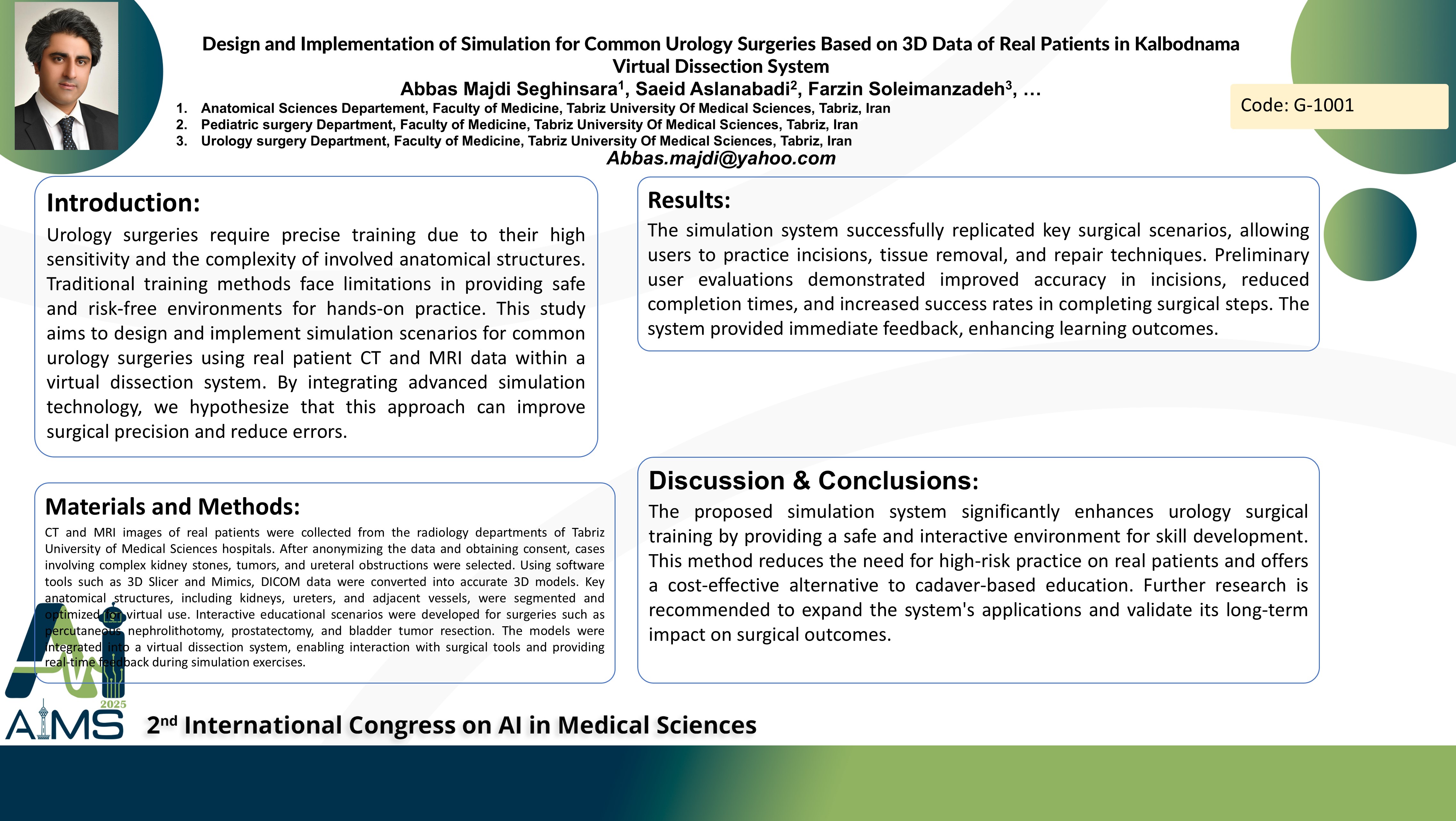Design and Implementation of Simulation for Common Urology Surgeries Based on 3D Data of Real Patients in Kalbodnama Virtual Dissection System
Code: G-1250
Authors: Abbas Majdi Seghinsara * ℗, Saeid Aslanabadi, Farzin Soleimanzadeh
Schedule: Not Scheduled!
Tag: Cancer Diagnosis & Treatment
Download: Download Poster
Abstract:
Abstract
Background and aims: Urology surgeries require precise training due to their high sensitivity and the complexity of involved anatomical structures. Traditional training methods face limitations in providing safe and risk-free environments for hands-on practice. This study aims to design and implement simulation scenarios for common urology surgeries using real patient CT and MRI data within a virtual dissection system. By integrating advanced simulation technology, we hypothesize that this approach can improve surgical precision and reduce errors. Method: CT and MRI images of real patients were collected from the radiology departments of Tabriz University of Medical Sciences hospitals. After anonymizing the data and obtaining consent, cases involving complex kidney stones, tumors, and ureteral obstructions were selected. Using software tools such as 3D Slicer and Mimics, DICOM data were converted into accurate 3D models. Key anatomical structures, including kidneys, ureters, and adjacent vessels, were segmented and optimized for virtual use. Interactive educational scenarios were developed for surgeries such as percutaneous nephrolithotomy, prostatectomy, and bladder tumor resection. The models were integrated into a virtual dissection system, enabling interaction with surgical tools and providing real-time feedback during simulation exercises. Results: The simulation system successfully replicated key surgical scenarios, allowing users to practice incisions, tissue removal, and repair techniques. Preliminary user evaluations demonstrated improved accuracy in incisions, reduced completion times, and increased success rates in completing surgical steps. The system provided immediate feedback, enhancing learning outcomes. Conclusion: The proposed simulation system significantly enhances urology surgical training by providing a safe and interactive environment for skill development. This method reduces the need for high-risk practice on real patients and offers a cost-effective alternative to cadaver-based education. Further research is recommended to expand the system's applications and validate its long-term impact on surgical outcomes.
Keywords
Urology, Surgical Simulation, Virtual Dissection
